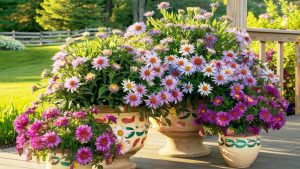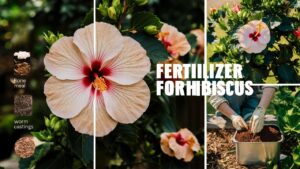Alabama, with its humid subtropical climate, provides garden enthusiasts a diverse array of options for planting in June. As the temperatures rise, this month presents a great opportunity to sow seeds and transplant young plants that thrive in the warm weather characteristic of the early summer months.
Based on the various USDA plant hardiness zones found throughout Alabama, here’s an extensive guide covering vegetables, flowers, herbs, and landscape plants that can flourish if planted in June.
Vegetables To Plant
Okra
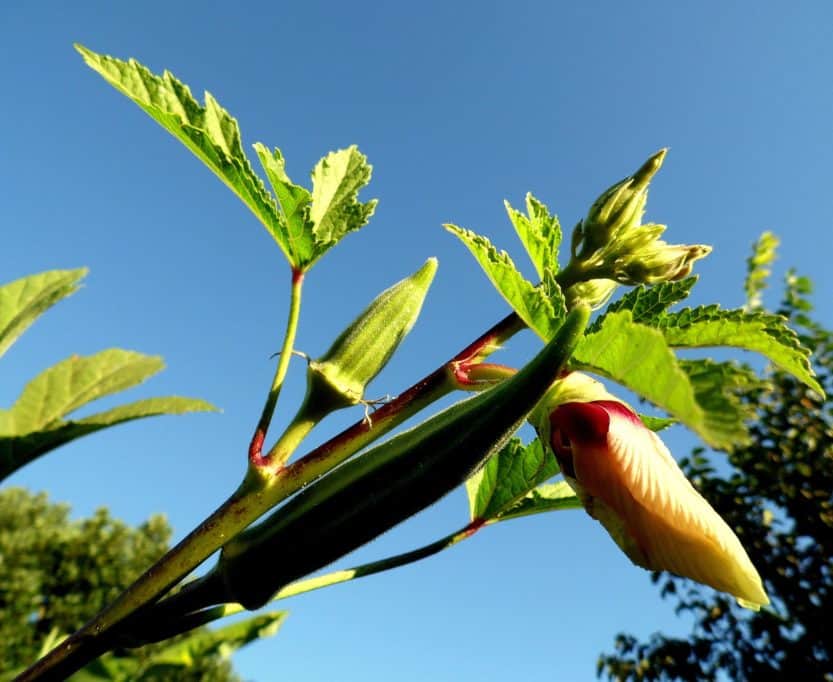
Okra (Abelmoschus esculentus) is a southern staple that thrives in the hot, humid climate of Alabama. It prefers air temperatures ranging from 75°F to 95°F. When planting okra, the best window is from mid-May to early June after frost risks have passed. Seeds should be planted about 1 inch deep in well-draining, fertile soil. Okra is drought-tolerant once established but benefits from regular watering to support pod production. These plants can grow tall, so ensuring adequate spacing of about 12-18 inches between plants is crucial for maximizing yield and air circulation. Additionally, okra is rich in vitamins A and C, making it a nutritious addition to meals.
Southern Peas
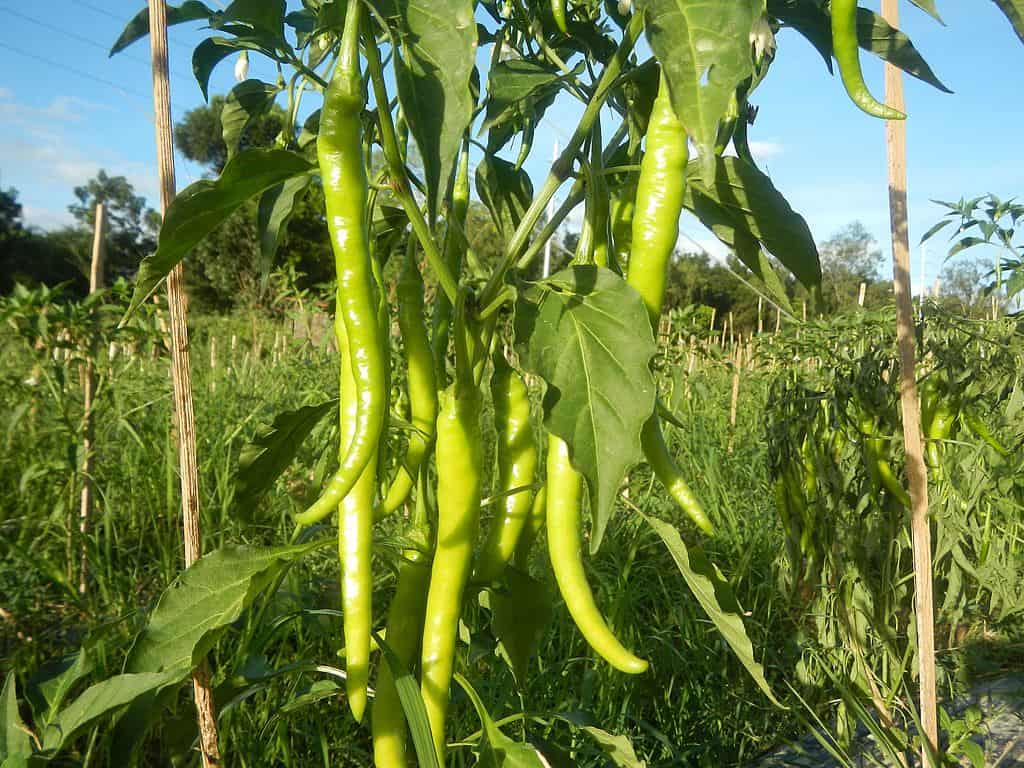
Southern peas, including cowpeas and black-eyed peas (Vigna unguiculata), are another excellent option for June planting. These plants thrive in soil temperatures of 70°F to 85°F and can be sown directly into the garden as soon as the soil warms in late spring to early summer. Planting should typically occur from late May to early July to ensure optimal growth throughout the summer. These peas are highly drought-resistant and do well in poor soils, making them favorable for Alabama gardens. Additionally, planting southern peas helps improve soil fertility by fixing nitrogen, making them a beneficial crop for crop rotation.
Squash
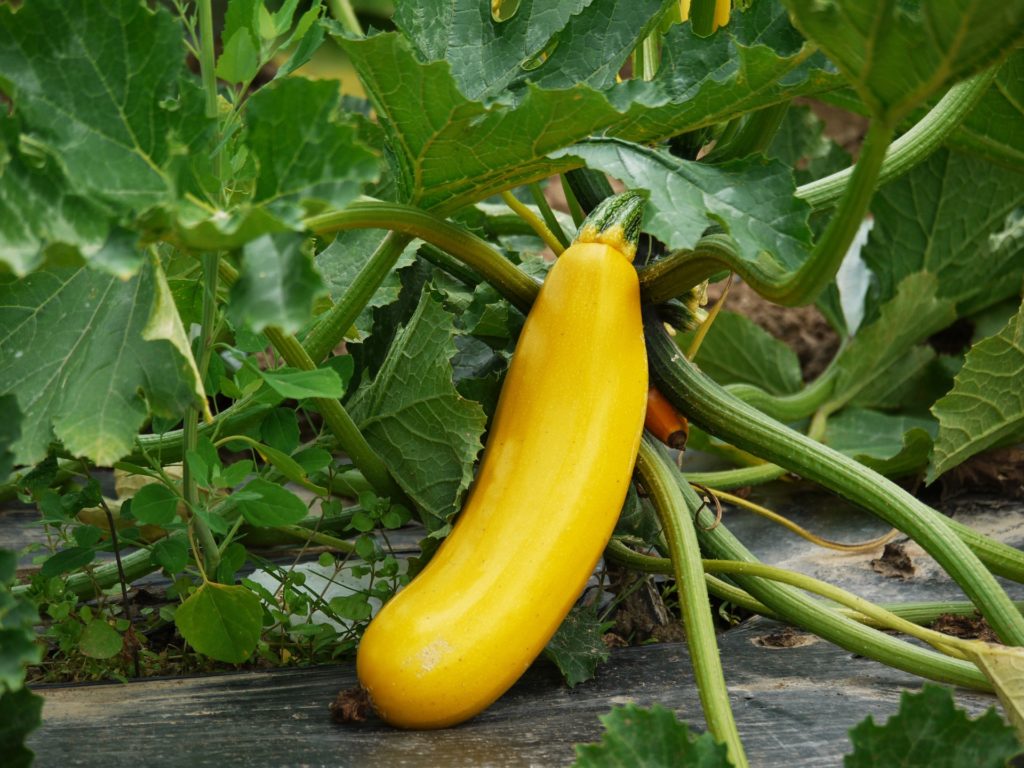
Squash (Cucurbita pepo for summer squash and Cucurbita maxima for winter squash) is a warm-season crop that takes advantage of Alabama’s heat. The ideal temperature range for squash growth is between 70°F and 90°F. Seeds can be direct-sown in the garden as early as mid-June, but starting them in May ensures a head start. Squash plants spread widely, so it’s essential to give them about 2 feet of space between each plant to allow for sprawling growth. Regular watering and mulching can help in maintaining soil moisture and temperature, promoting healthy fruit production. Summer squash, such as zucchini, can be harvested just a few weeks after planting, making it a rewarding choice for gardeners.
Cucumbers
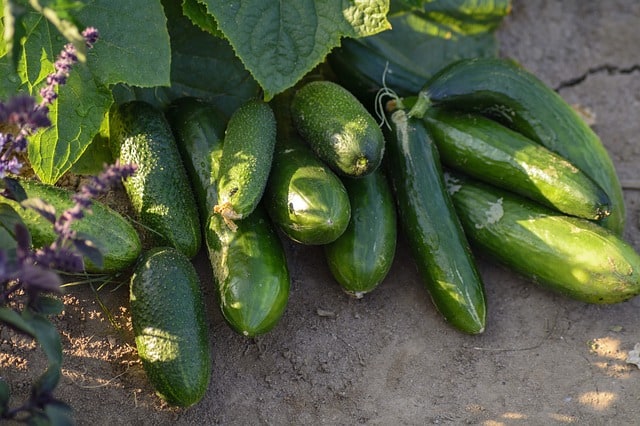
Cucumbers (Cucumis sativus) are highly favored for their fast growth and prolific yields. They thrive best at temperatures between 70°F and 95°F and can be seeded directly in the garden by mid-June. Cucumbers prefer well-draining soil and benefit from trellising to save space in the garden and improve air circulation. They require consistent moisture; irregular watering can lead to bitter-tasting fruit. The average time to harvest is around 50 to 70 days for most varieties, allowing for quick production of fresh salads and pickles.
Green Beans
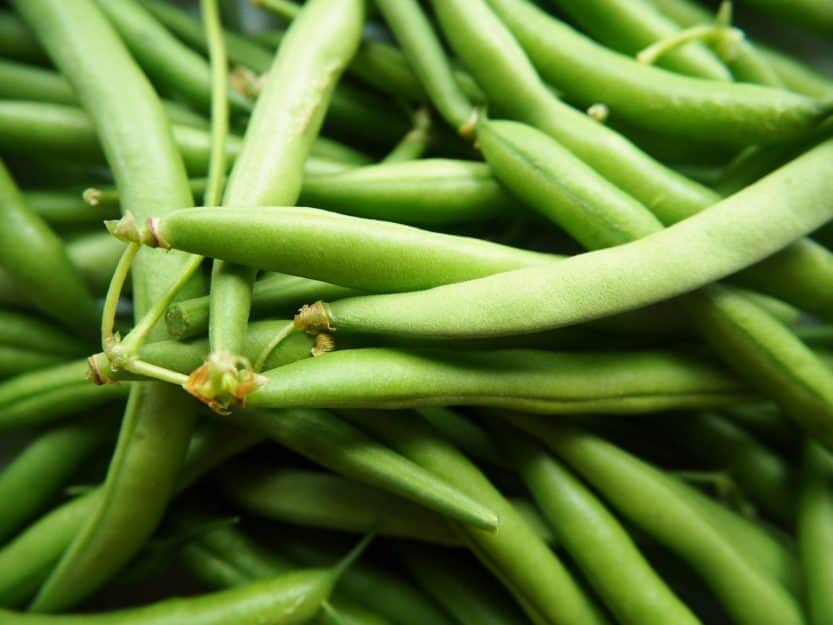
Green beans (Phaseolus vulgaris) are an easy and rewarding crop to grow in June. They prefer warm temperatures (70°F to 90°F) and can be directly seeded into the soil as soon as the risk of frost has passed. Planting can be continued throughout the summer, with bush types being ready for harvest in about 50-60 days and pole varieties taking longer at 60-90 days. Beans prefer well-draining soil rich in organic matter and consistent moisture to produce tender, delicious pods. Additionally, due to their nitrogen-fixing ability, growing beans enhances soil fertility, making them an excellent choice for sustainable gardening.
Pumpkins
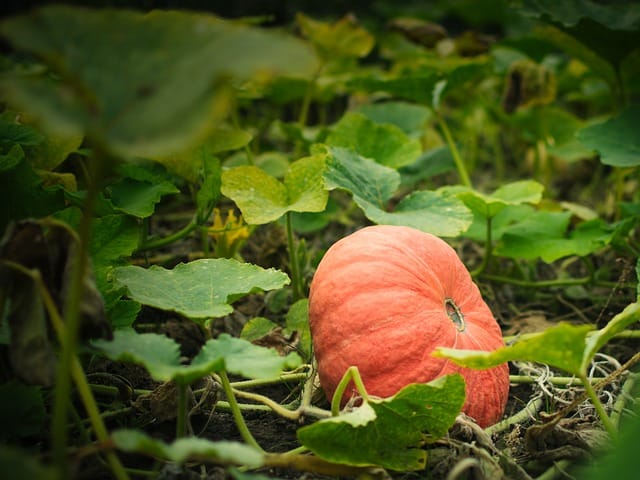
Pumpkins (Cucurbita pepo) are a quintessential fall crop, but they require planting earlier in the season when temperatures are warm. Although traditional planting starts in May, it is still permissible to plant pumpkin seeds in June for a late harvest in October. They thrive at soil temperatures of 65°F to 75°F. Pumpkins need plenty of space to grow, so spacing them at least 3 feet apart helps them to sprawl. Adequate watering—especially during flowering and fruit development—is crucial for producing large, healthy pumpkins. Depending on the variety, pumpkins can take anywhere from 75 to 120 days to mature, ensuring they are ready for Halloween fun.
Tomatoes
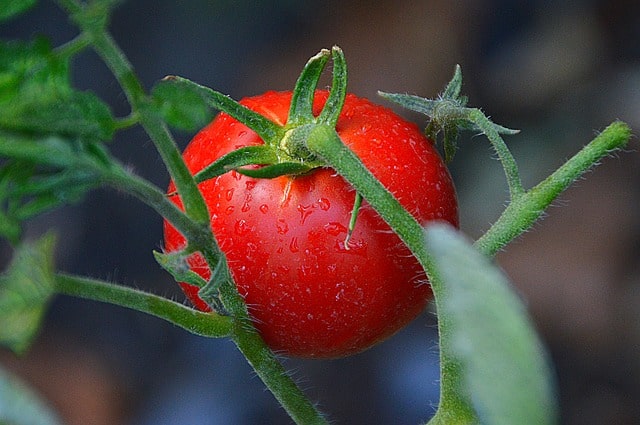
Tomatoes (Solanum lycopersicum) are a garden favorite, thriving in Alabama’s heat. They grow best at temperatures between 70°F and 90°F. Though many gardeners aim to plant tomatoes earlier in the spring, heat-tolerant varieties can still be planted in June. Suitable plants such as Heatmaster or Solar Set are specifically bred to set fruit in high temperatures. Ensure to provide stakes or cages for support, as tomato plants can become quite large. Adequate watering and mulching will prevent issues such as blossom drop and help produce flavorful fruit. Most varieties typically mature in 60 to 90 days from transplanting, making them a valued crop in the summer garden.
Peppers

Peppers (Capsicum spp.) thrive in hot environments, preferring temperatures from 70°F to 100°F. They can be successfully planted in June as the soil has warmed sufficiently. Varieties such as jalapeño, bell, and banana peppers are excellent choices for home gardens. Transplants should be spaced about 18-24 inches apart in well-draining soil enriched with organic matter. Consistent watering is essential to prevent the fruits from becoming tough or bitter. Peppers not only provide vibrant color to gardens but also offer a range of flavors, from sweet to fiery, making them versatile for kitchen use.
Eggplant
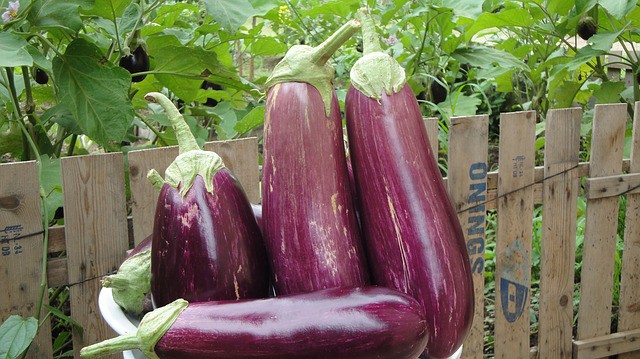
Eggplant (Solanum melongena) is another heat-loving crop that thrives in warm temperatures of 70°F to 90°F. During June, eggplant can be directly seeded or transplanted into the garden. The plant does well in fertile, well-draining soil and benefits from consistent watering, especially during the flowering and fruiting stages. With its unique purple hue, eggplant is both ornamental and edible, perfect for Mediterranean cuisine. Harvesting typically occurs roughly 70 days after planting, providing gardeners with a fruitful yield for summer miso, parmesan, and other dishes.
Corn
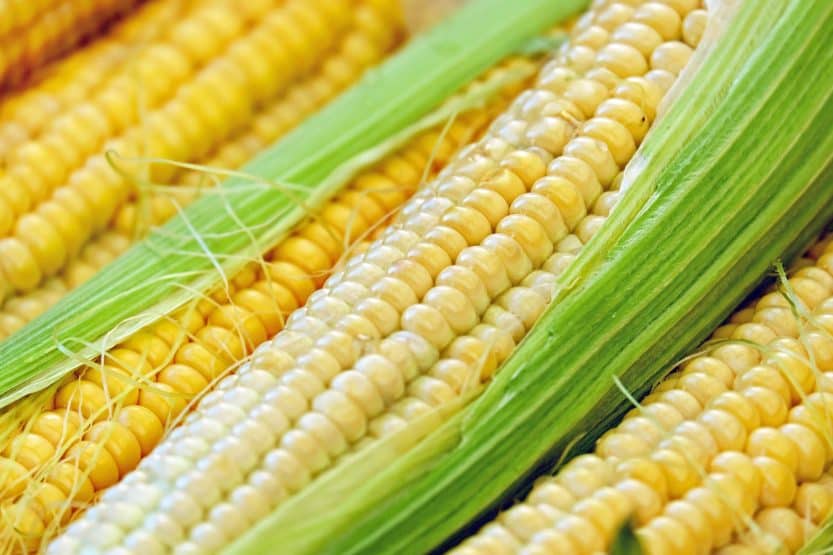
Sweet corn (Zea mays) is a summer staple that grows well in Alabama’s climate. It prefers soils warmed to 60°F to 95°F, making late June a great time to plant seeds directly in the garden. For optimal pollination and yield, sweet corn should be sown in blocks rather than rows, as corn is wind-pollinated. Ensure the corn is watered regularly, particularly when the plants are establishing roots and during the ear formation. Corn typically takes about 70 to 100 days to mature, allowing you to enjoy fresh corn on the cob by late summer or early fall.
Flowers To Plant
Zinnias

Zinnias (Zinnia elegans) are one of the most vibrant and cheerful annuals for Alabama gardens. They thrive in warm weather, preferring temperatures between 70°F and 95°F. Various types can be seeded directly into well-draining soil or started indoors for transplanting around early June. Zinnias require full sunlight and can bloom all summer long with minimal care. Regular deadheading encourages more blooms, making them a favorite for both gardeners and pollinators alike. These flowers are also resistant to pests, making them a great low-maintenance choice for stunning garden displays.
Sunflowers

Sunflowers (Helianthus annuus) are iconic summer flowers that are easy to grow. They prefer full sun and thrive in temperatures between 70°F and 95°F. Planting can continue into June when soil temperatures adequately ensure germination. Sunflowers should be planted in well-draining soil, spaced at least 2-3 feet apart to accommodate their height. These striking botanicals can grow anywhere from 3 to over 10 feet tall, providing visual appeal and attracting beneficent pollinators like bees and butterflies. Additionally, their seeds are excellent for attracting birds after the blooms fade.
Marigolds
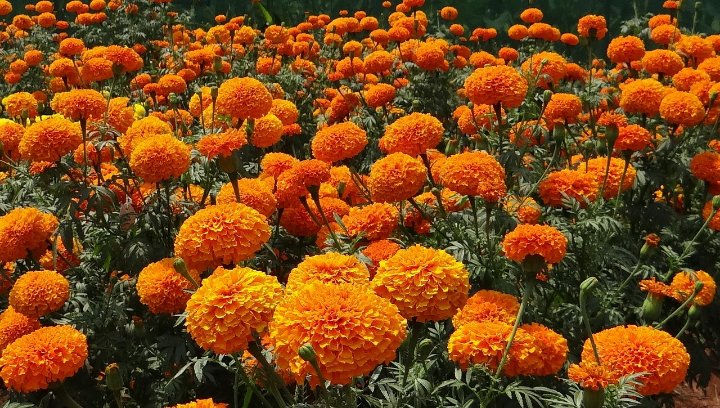
Marigolds (Tagetes spp.) are fantastic companions for vegetable gardens, deterring pests and attracting beneficial insects. They thrive in warm conditions with temperatures ranging from 60°F to 90°F. June planting allows for summer blooms from these resilient annuals. Plant seedlings or seeds directly into sunny garden beds, ensuring sufficient spacing for airflow. Marigolds are drought-tolerant but prefer regular watering to ensure vibrant blooms. Their vibrant yellow and orange colors not only beautify gardens but also double as pest control, helping ward off nematodes and other garden pests.
Cosmos

Cosmos (Cosmos bipinnatus) are graceful annuals that provide lovely sweeping blooms in pastel shades. They thrive in hot weather, with an ideal temperature range of 70°F to 90°F. Cosmos seeds can be directly sown into well-aerated soil in full sun starting in June. These flowers are particularly hardy and forgiving, tolerating poor soil conditions. Requiring little maintenance, cosmos encourage wildlife with their nectar-rich flowers, drawing in bees and butterflies. They can reach heights of 2-4 feet, adding height and movement to garden beds while beautifying landscapes throughout the summer.
Lantana
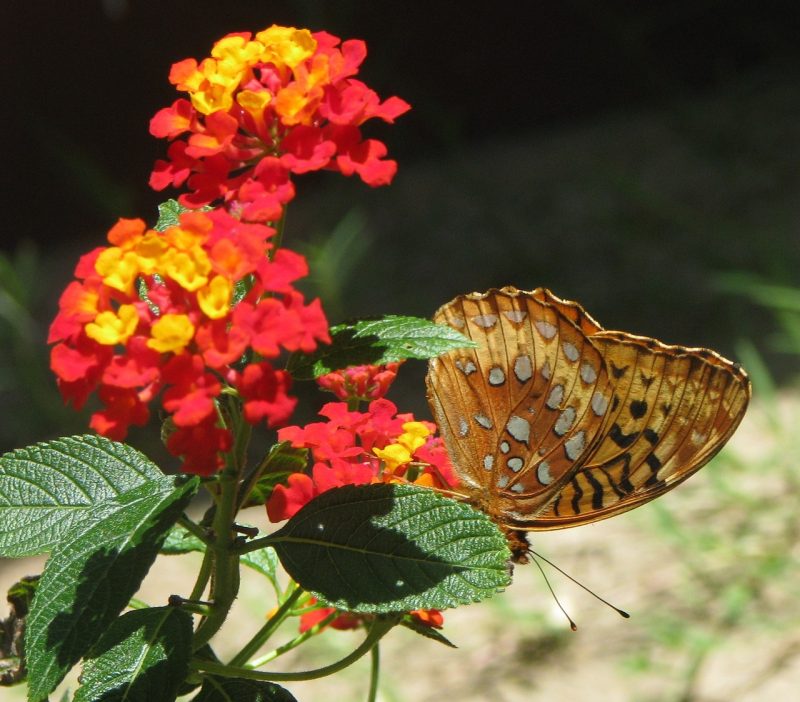
Lantana (Lantana camara) is a perennial that thrives in the heat, making it an excellent option for Alabama summers. It thrives in temperatures ranging from 70°F to 100°F, making June an ideal time for planting. This sun-loving plant requires well-drained soil and creates incredible flower clusters that provide vibrant shades of yellow, orange, pink, and purple. Lantana is drought-tolerant once established, making it a great choice for low-maintenance gardens. Its nectar-rich flowers attract hummingbirds and butterflies, providing an active and joyful landscape.
Salvia
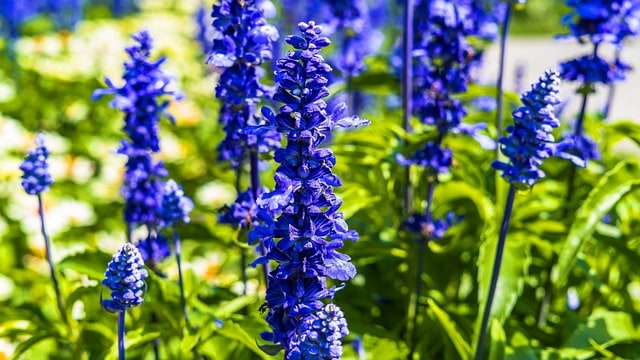
Salvia (Salvia spp.), or sage, comprises various species perfect for Alabama’s climate. Varieties like ‘Mystic Spires’ prefer warm temperatures ranging from 70°F to 90°F. Planting in well-draining soil in full sunlight during June encourages vibrant blooms through the summer. Salvia is known for its drought tolerance and pest resistance, making it a great addition to perennial borders and garden beds. Additionally, its tall spikes of flowers create an impressive vertical element in the garden while attracting pollinators.
Dahlia
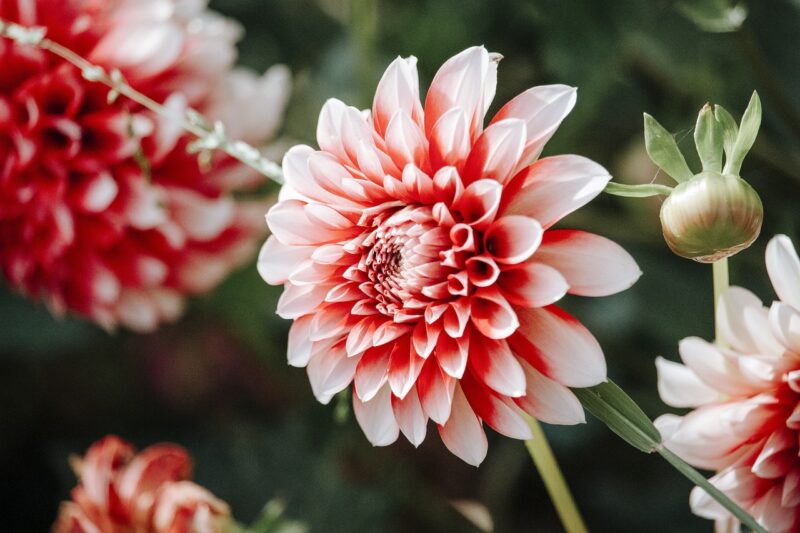
Dahlias (Dahlia pinnata) are stunning perennials that bloom in colorful bursts during the summer months. They prefer temperatures between 70°F and 85°F and can be planted in the garden in June or started in pots earlier in the season. Dahlias appreciate well-drained soil with ample organic matter and require full sun for optimal flowering. Depending on the variety, they typically bloom from mid-summer through fall, making them excellent for cut flower gardens. With their spectacular blooms, dahlias are not only striking in the garden but serve as a prized flower in bouquets.
Bougainvillea
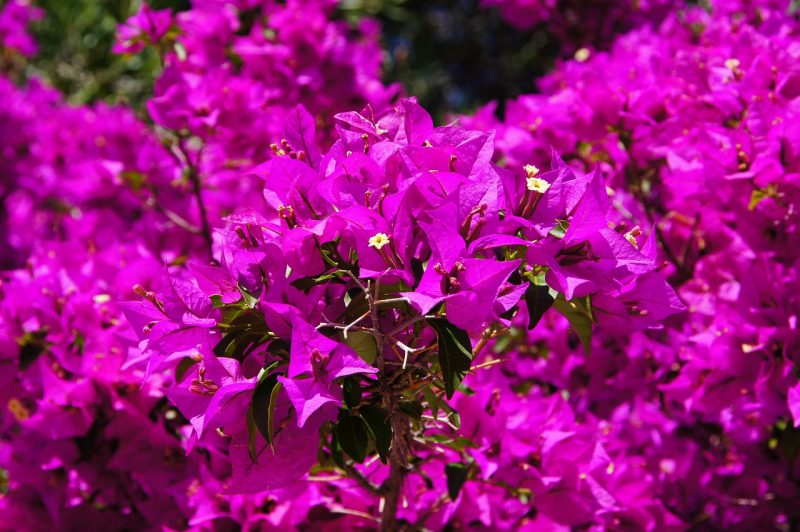
Bougainvillea (Bougainvillea spp.) is a tropical vine that thrives in Alabama’s heat. This plant prefers temperatures between 65°F and 100°F, flourishing in full sun and well-drained soil. June is an ideal time to plant bougainvillea, allowing it to establish itself before the full heat of summer. Bougainvillea typically produces vibrant bracts that create a beautiful display throughout the warmer months. This hardy plant can be trained to climb fences or espalier against walls, adding character and color to outdoor spaces.
Pentas

Pentas (Pentas lanceolata) are known for their star-shaped flowers that continuously bloom throughout summer, making them a great choice for gardens in Alabama. They thrive in warm temperatures ranging from 70°F to 90°F. Planting in June is ideal, as these plants prefer well-draining soil and full sunlight. Pentas are highly attractive to pollinators, making them beneficial for enhancing local wildlife while adding vibrant color to landscapes. They are also drought-tolerant once established, fitting well into low-maintenance garden plans.
Black-eyed Susans
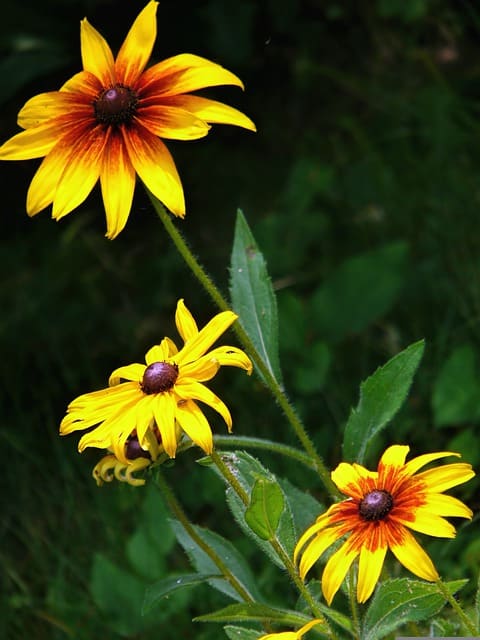
Black-eyed Susans (Rudbeckia hirta) are hardy perennials that thrive in Alabama gardens, offering cheerful yellow blooms from summer through fall. They perform well in temperatures between 60°F and 85°F. Planting can occur in June, and they prefer areas with full sun and well-drained soil. Known for their drought resistance and low maintenance, black-eyed Susans are attractive to pollinators, creating an inviting environment in garden beds. They provide a burst of color alongside other blooms, enhancing the landscape’s beauty.
Herbs To Plant
Basil
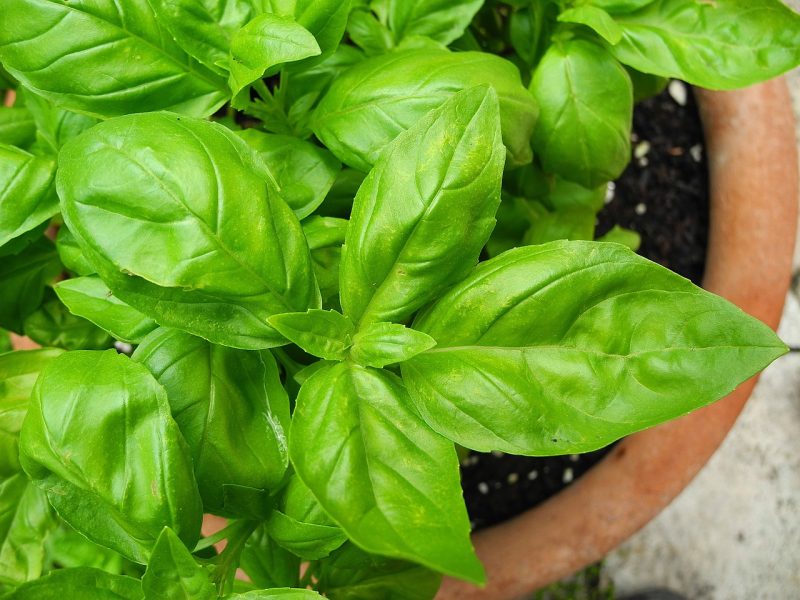
Basil (Ocimum basilicum) is a favorite culinary herb prized for its aromatic leaves. It thrives in warm environments with temperatures ranging from 70°F to 90°F. It can be directly seeded or trans planted in June after all frost risks have passed. Basil grows best in well-drained soil enriched with organic material. Consistent watering helps keep the leaves tender and flavorful. This herb is a key ingredient in pesto and pairs beautifully with tomatoes, making it a staple in summer dishes. Additionally, pinching back the top leaves encourages bushier growth and an extended harvest.
Cilantro
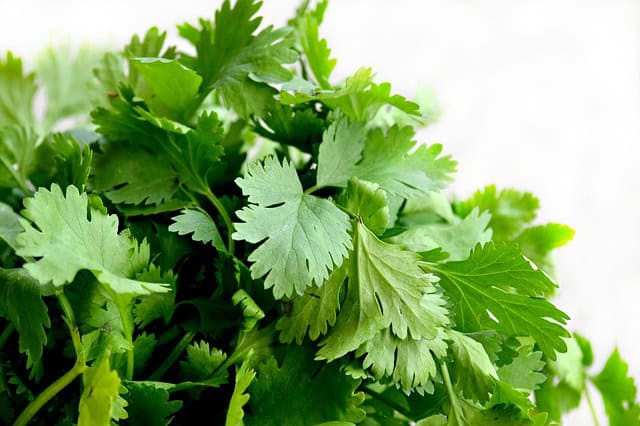
Cilantro (Coriandrum sativum) is an herb that grows best in cooler weather, but it can still be planted in early June in Alabama before temperatures get too hot. It prefers growing in temperatures between 60°F and 75°F and typically bolts in high heat; therefore, planting early in June is essential. Cilantro germinates quickly in well-drained soil and benefits from regular moisture. Its fresh, aromatic leaves enhance various cuisines—especially Mexican and Asian dishes. To avoid bitter taste, timely harvesting is key, as cilantro rapidly goes to seed in warm weather.
Rosemary
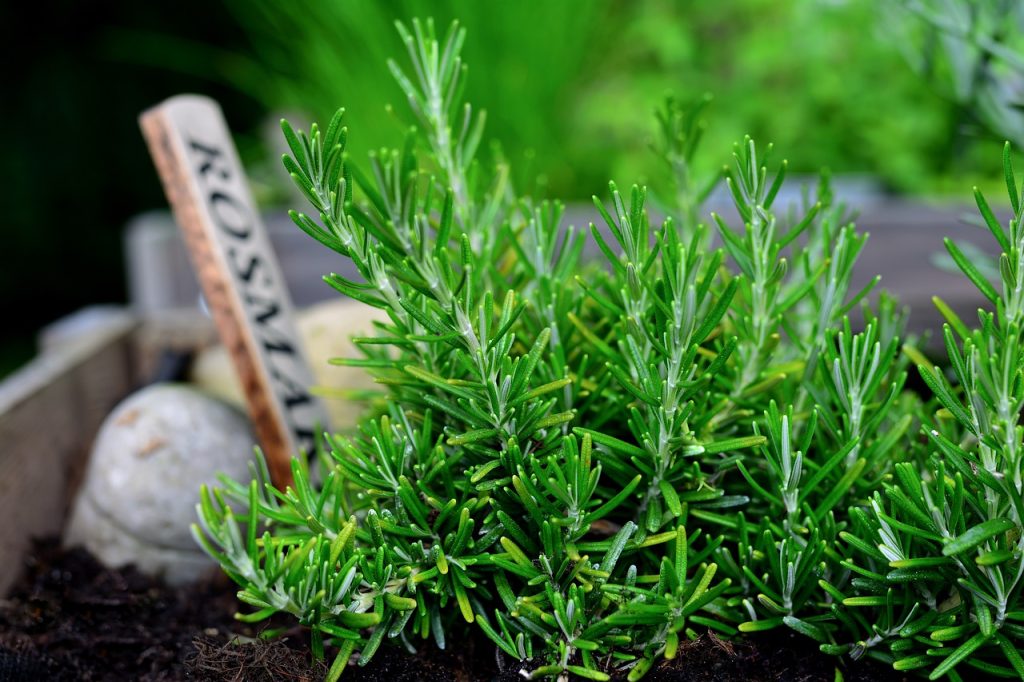
Rosemary (Salvia rosmarinus) is a perennial herb that flourishes in warm climates. It prefers air temperatures from 65°F to 85°F and can be planted in June into well-draining, sandy soil. Rosemary loves full sun and, once established, is drought-tolerant. This herb serves not only as a culinary delight in Mediterranean dishes but also offers fragrant foliage that can enhance floral arrangements. Regular pruning helps maintain plant shape, promotes new growth, and encourages vigor. Additionally, rosemary’s attractive flowers support pollinators.
Oregano
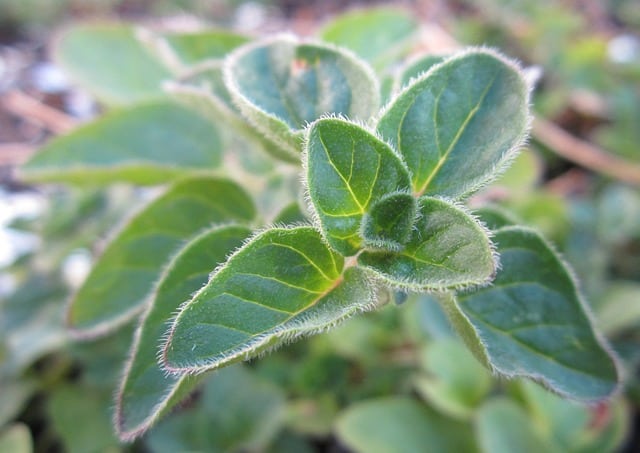
Oregano (Origanum vulgare) thrives in warm weather, making June an appropriate time for planting in Alabama gardens. This herb prefers temperatures between 70°F and 90°F and can be started from seeds or transplants. Oregano requires well-draining soil and full sun conditions to develop its robust flavor. Its culinary uses span various cuisines, particularly in Italian cooking. Oregano is drought-resistant, making it an ideal low-maintenance herb choice. Regular harvesting encourages bushiness and prolonged leaf production throughout the summer.
Thyme
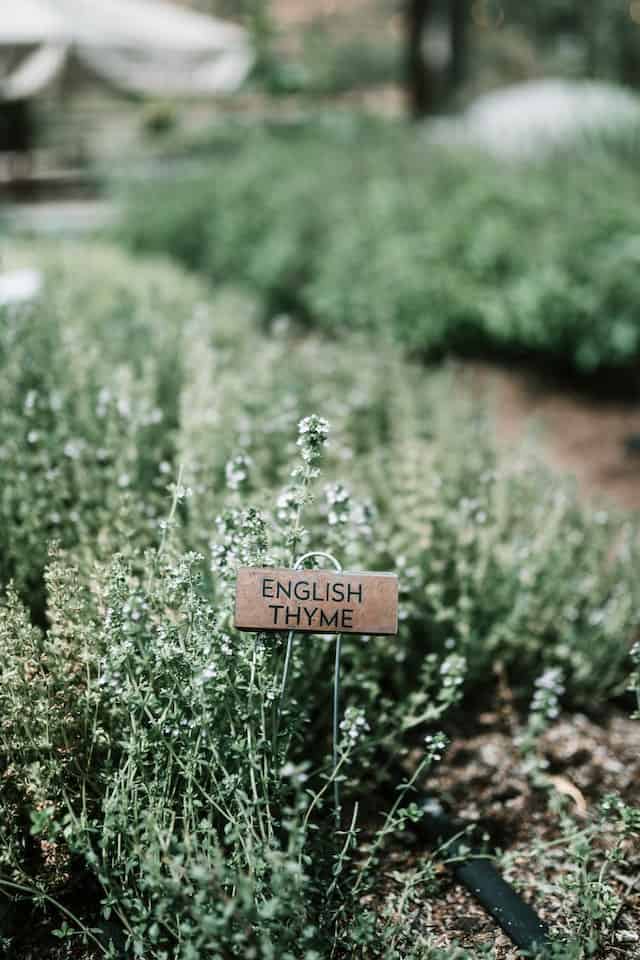
Thyme (Thymus vulgaris) is a hardy herb that thrives in the early summer heat of Alabama, with optimal temperatures ranging from 70°F to 85°F. It can be planted in June in well-draining soil and prefers full sun exposure. Thyme is drought-tolerant and grows well in poor soils, making it ideal for low-maintenance gardens. Its aromatic leaves are perfect for flavoring dishes and can also be used fresh or dried. Regular harvesting of thyme promotes a healthy growth habit, yielding delicious aromatic leaves for seasoning.
Mint
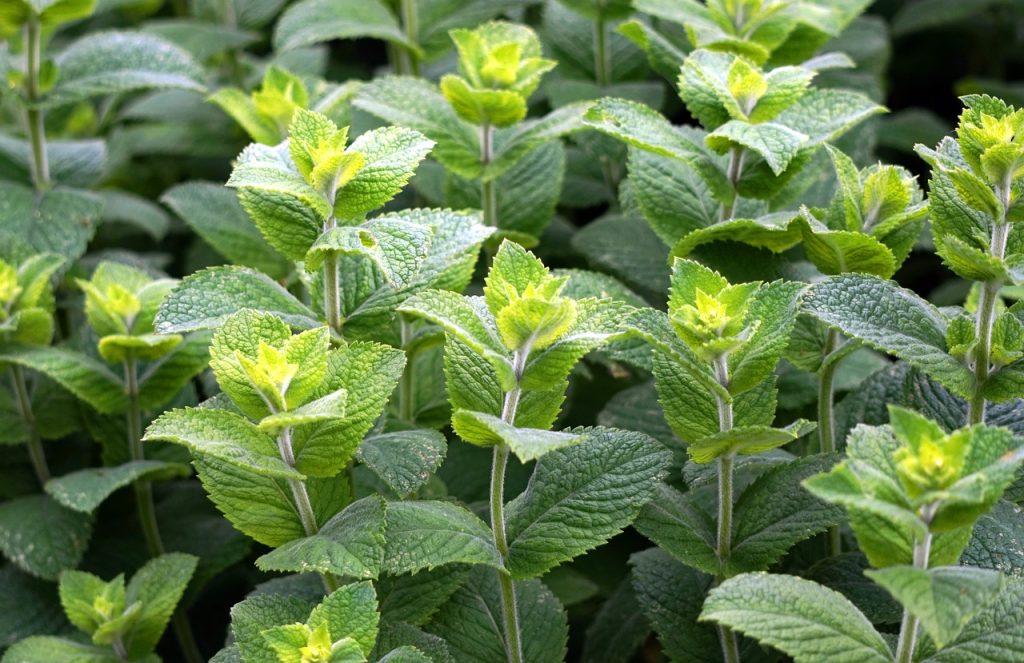
Mint (Mentha spp.) is a vigorous herb that enjoys warm weather, thriving in temperatures between 70°F to 85°F. Planting mint in containers is recommended in June to prevent its invasive spread. Mint prefers moist, well-draining soil and partial to full sun. Its refreshing leaves can enhance drinks, salads, and desserts—making it an essential summer herb. Additionally, mint produces lovely flowers that attract beneficial pollinators to your garden.
Parsley
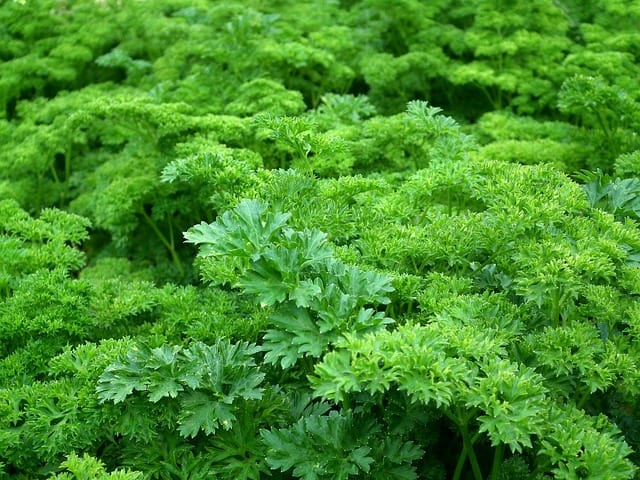
Parsley (Petroselinum crispum) is a biennial herb often grown as an annual. It likes temperatures between 70°F and 85°F and can be planted in June in well-drained soil. Parsley prefers full sun but can tolerate partial shade. This herb is versatile in dishes, from salads to garnishes, making it a favorite among home cooks. Frequent harvesting encourages bushier growth and extends production throughout the summer season, allowing you to enjoy fresh parsley for various culinary uses.
Chives

Chives (Allium schoenoprasum) are hardy, perennial herbs that thrive in warm temperatures ranging from 65°F to 80°F. They can be planted in June in well-drained soil with plenty of sunlight. Chives also grow exceptionally well in containers. Their mild onion flavor is perfect for fresh salads and garnishes, and their purple flowers are edible as well, adding decorative value. Chives are low-maintenance and can be divided every few years to create new plants, further enhancing your herb garden.
Dill
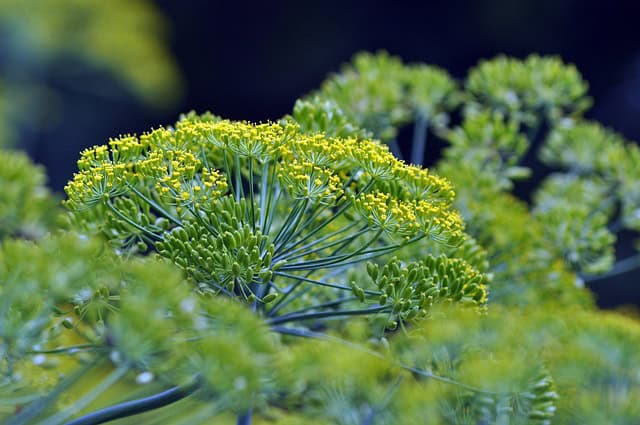
Dill (Anethum graveolens) is an annual herb best planted in warm conditions, boasting optimal temperatures between 70°F and 85°F. Directly sow seeds in June in well-draining soil to provide a steady harvest throughout the summer. Dill benefits from plenty of sunlight. Its feathery foliage adds flavor to various dishes, especially in pickling and seafood dishes. Timely harvesting helps prevent bolting, ensuring a continuous supply of fresh dill leaves. The flowers are also appealing to beneficial insects, enhancing the wildlife in your garden.
Fennel
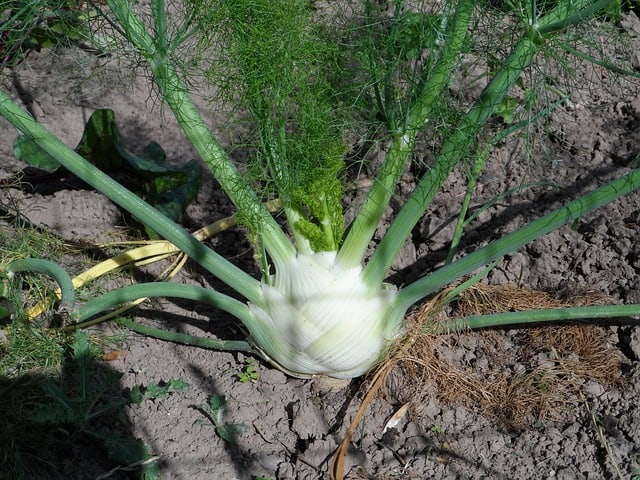
Fennel (Foeniculum vulgare) is a fascinating herb that can be planted in June, thriving in warm temperatures between 70°F to 90°F. It requires well-drained soil and full sun exposure to reach optimal growth. The entire plant is edible, including the bulb, stalks, and feathery leaves, making it an excellent culinary choice. Fennel’s sweet, anise-like flavor complements a range of dishes, from salads to roasted vegetables. The seeds can also be harvested and used as a spice, appealing not only for culinary use but also attracting essential pollinators.
Landscape Plants To Plant In June
Crepe Myrtle
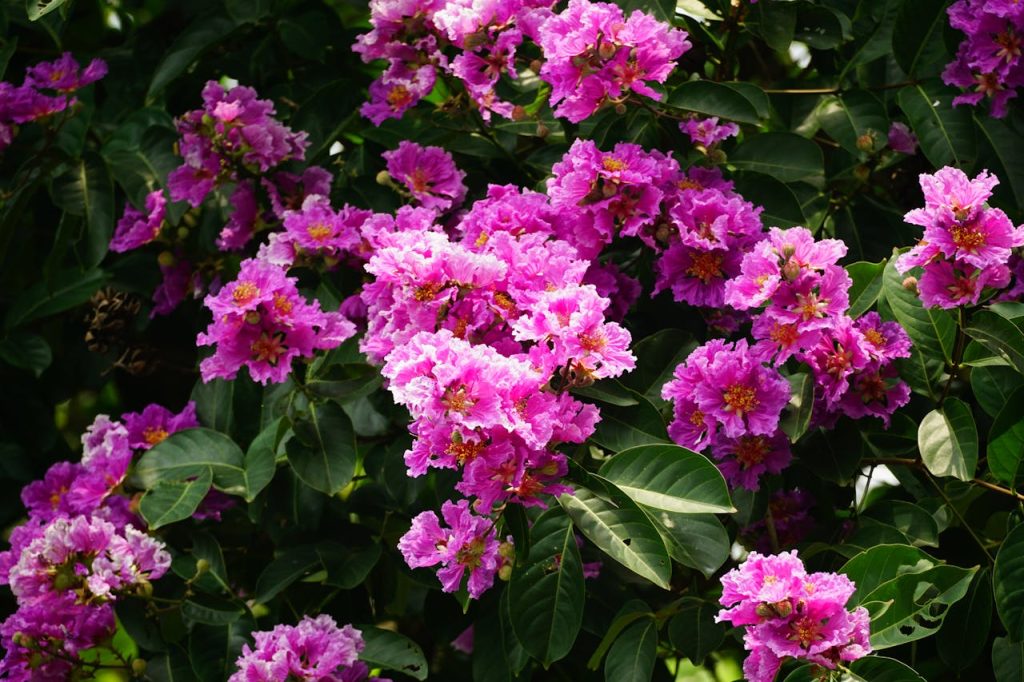
Crepe myrtle (Lagerstroemia indica) is a quintessential Southern flowering tree or shrub, ideal for the warm Alabama climate. Thriving in temperatures ranging from 70°F to 100°F, crepe myrtle can be planted in June. They prefer full sun and well-draining soil, and they bloom beautifully from midsummer into fall, boasting a palette of colors from white to striking red. Regular pruning helps enhance blooming and maintain desired shapes and sizes. Its resilience to drought makes crepe myrtle a popular choice for low-maintenance landscapes.
Holly
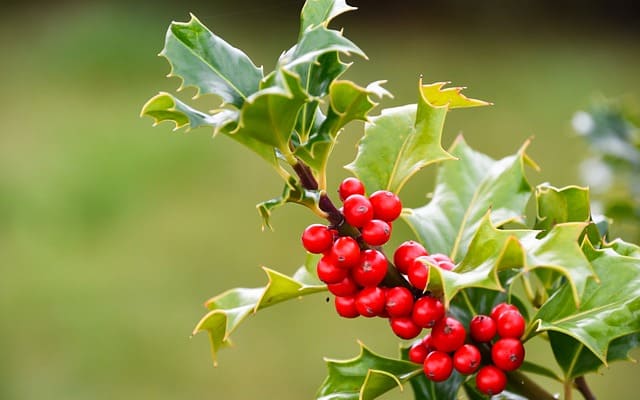
Hollies (Ilex spp.) are evergreen shrubs or trees that thrive throughout Alabama’s varied climate. They can be planted in June, adjusting well to temperatures ranging from 60°F to 95°F. Hollies prefer well-drained soil and can tolerate a range of light conditions, from shade to full sun. Their glossy leaves add year-round interest, while berry-producing hollies provide winter interest and food for birds. In addition to their aesthetic appeal, hollies make for excellent privacy hedges, combining beauty with functionality.
Daylily
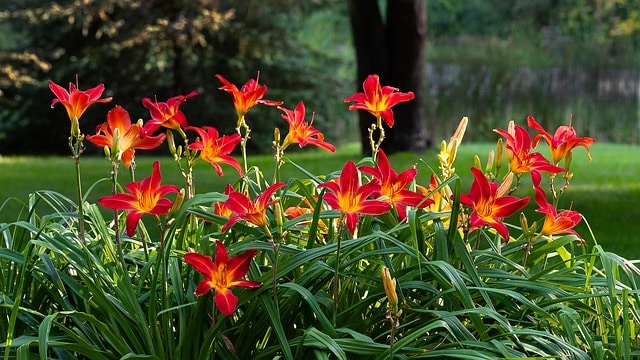
Daylilies (Hemerocallis spp.) are beloved perennial flowering plants that perform exceptionally well in Alabama gardens. Best suited for temperatures ranging from 60°F to 90°F, these plants can be planted or divided in June. Daylilies prefer full sun and can adapt to various soil conditions, though they bloom most profusely in well-drained, fertile soil. Their vibrant flowers come in a range of hues and attract pollinators. With minimal maintenance, daylilies continue to bloom throughout summer, providing extended color to landscapes.
Hydrangea

Hydrangeas (Hydrangea spp.) offer stunning blooms that add texture and color to landscapes. Varieties such as Endless Summer and Annabelle are perfect for June planting, thriving in temperatures of 65°F to 85°F. Plant hydrangeas in sites that receive morning sun and afternoon shade, as intense heat can cause wilting. Maintaining consistent moisture is critical to support their beautiful flowers. With their large clusters of blooms, hydrangeas are excellent choices for both borders and foundation plantings, providing stunning visual interest throughout the summer.
Butterfly Bush
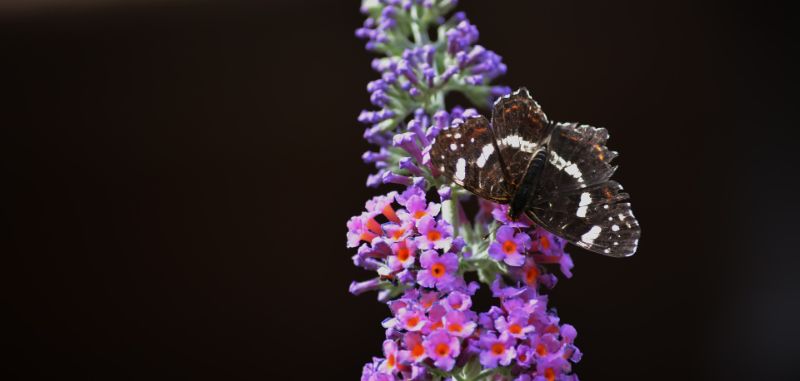
Butterfly bush (Buddleja spp.) is a highly attractive perennial known for its ability to draw butterflies to the garden. It thrives in warm temperatures (70°F to 90°F) and can be planted in June in well-draining soil. Planting in full sun promotes continued blooming throughout the summer months, resulting in vivid flower spikes that can be purple, pink, or white. Butterfly bushes can grow significantly, providing a habitat for pollinators, making gardens lively and colorful. Regular pruning after flowering can encourage vigorous growth in subsequent years.
Japanese Maple

Japanese maples (Acer palmatum) are stunning ornamental trees that can enhance any landscape. They flourish in temperatures from 60°F to 85°F, making June an ideal time for planting. The trees prefer partial shade and well-aerated, rich soil. With their delicate leaves and striking fall colors, Japanese maples create an impressive focal point year-round. After planting, ensuring consistent moisture is vital to support roots as they establish, ultimately leading to healthy and lush growth for many seasons to come.
Red Maple
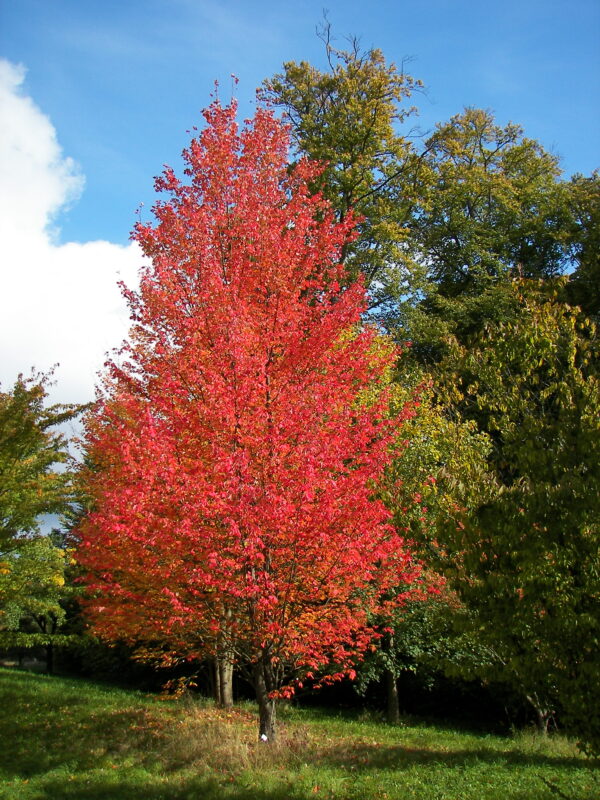
Red maple (Acer rubrum) is a native tree ideal for Alabama landscapes. Planting can occur in June during warmer months when temperatures soar (50°F to 90°F). Red maples tolerate a range of soil conditions, from wet to moderately dry. Not only do they provide stunning fall foliage, but they also offer valuable shade and habitat for wildlife throughout the growing season. Their fast growth makes them a favorable choice for landscapes, and regular watering during establishment will ensure a strong start.
Boxwood
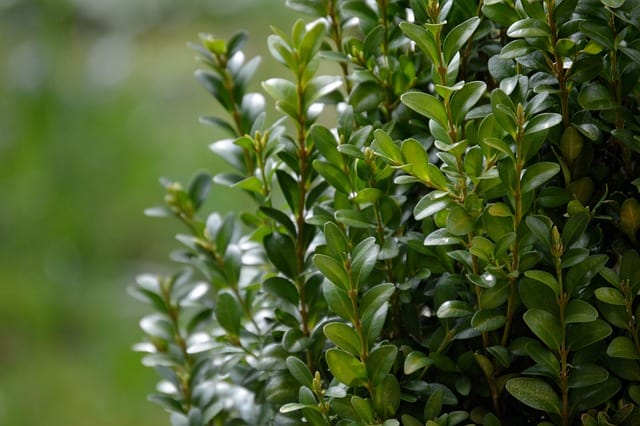
Boxwoods (Buxus spp.) are favored evergreen shrubs for creating structure in landscapes, thriving in temperatures from 60°F to 85°F. Planting can occur throughout June in well-draining soil with adequate sunlight. Boxwoods are versatile—they can be sheared into hedges or allowed to grow naturally for a more informal look. Regular trimming keeps them in shape and promotes new growth, allowing them to maintain their lush green foliage year-round. They make an excellent choice for formal gardens and can provide privacy and windbreaks.
Spirea

Spirea (Spiraea spp.) is a versatile flowering shrub that performs well in warm temperatures ranging from 65°F to 90°F. Planting in June allows them to establish before peak summer heat. Spirea prefers full sun and slightly acidic, well-draining soil. Flowering occurs from late spring through summer, providing colorful displays. Their low-maintenance requirements make them effective landscape additions, either as standalone plants or in mass plantings. Pruning after flowering encourages healthy growth and more blooms throughout the season.




